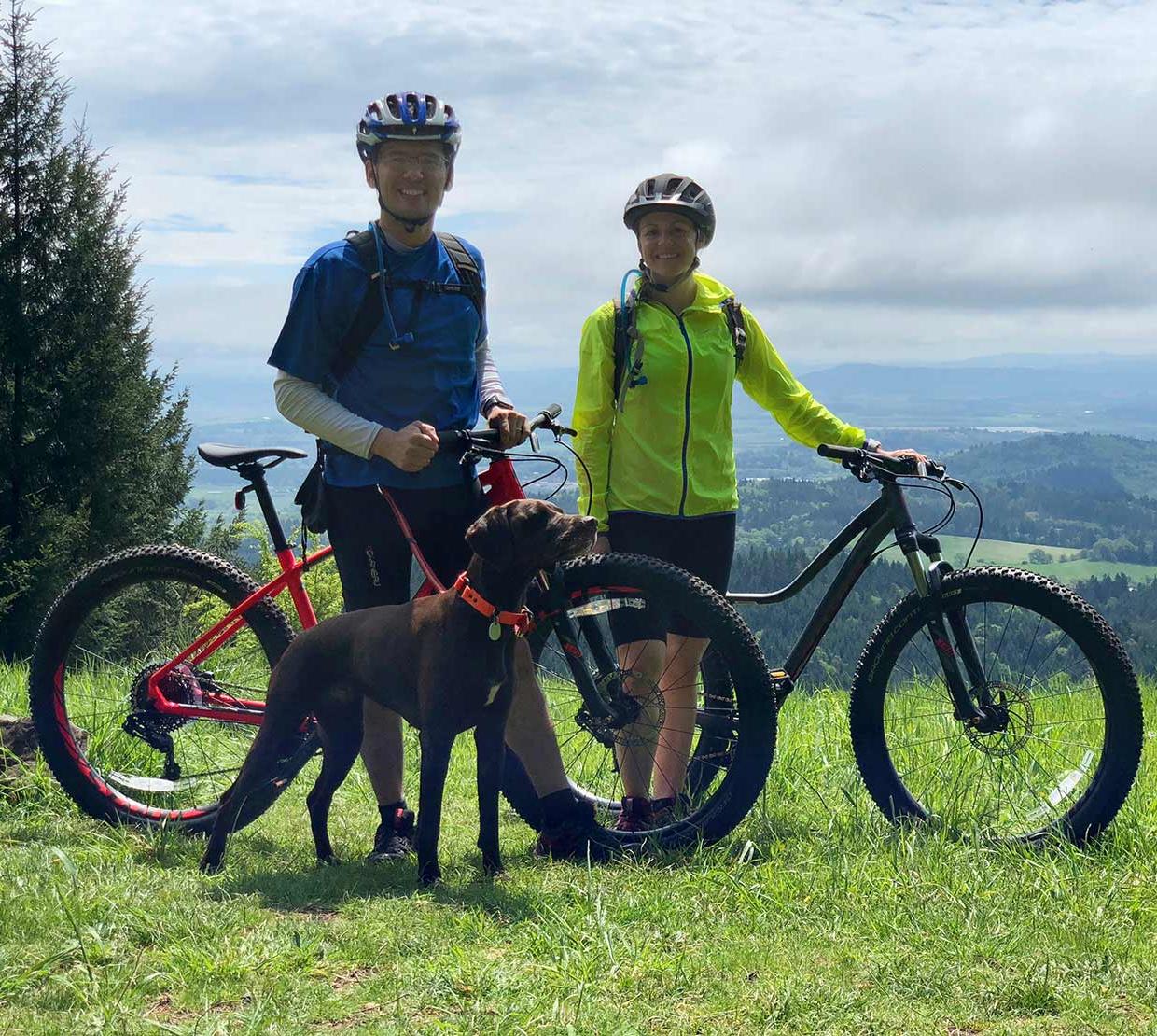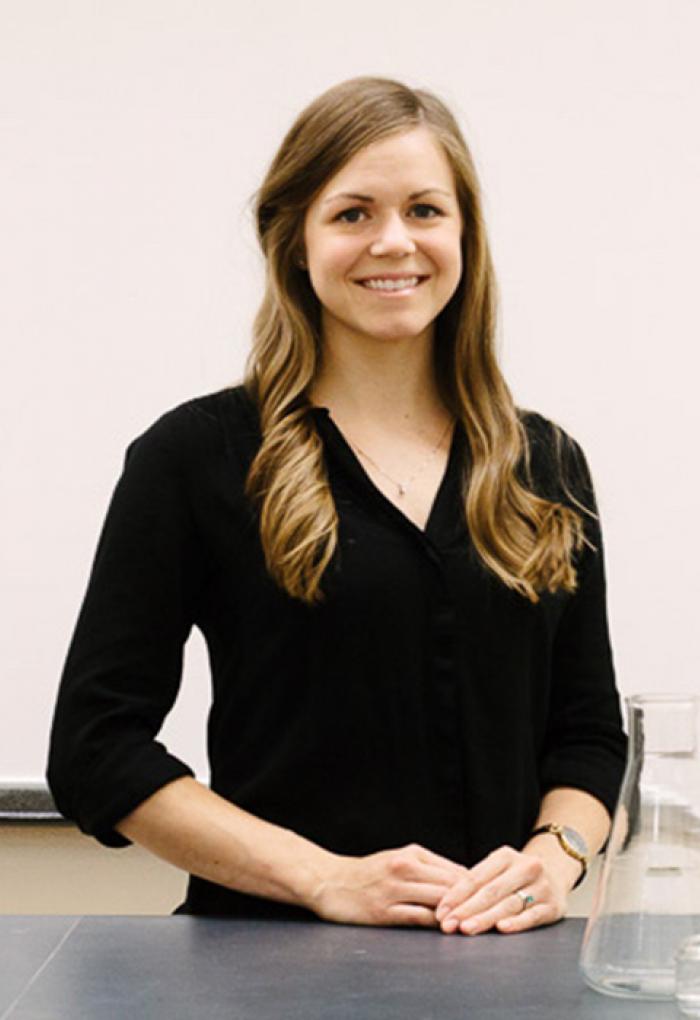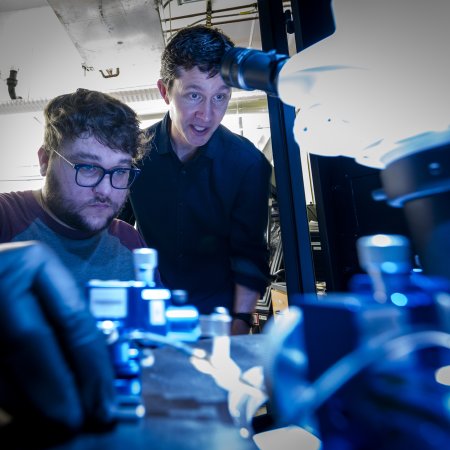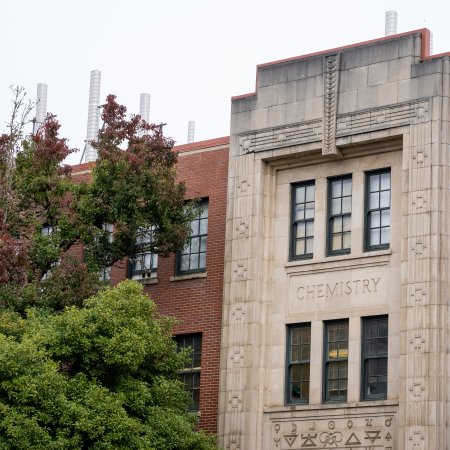The College of Science congratulates Courtney Rae Armour, the first graduate student to receive the Larry W. Martin & Joyce B. O’Neill Endowed Fellowship. The award recognizes students who demonstrate high achievement and whose research involves computational modeling.

Courtney Rae Armour mountain biking

Courtney Rae, the Larry W. Martin & Joyce B. O’Neill Endowed Fellowship winner
The fellowship provides full tuition with an annual stipend of $25,000. Larry Martin (B.S., ’59) is a mathematics and engineering alumnus who had a successful career as a mathematician focusing on modeling for companies such as Lockheed Martin and IBM. After a successful career at IBM, he created, bought and invested in companies, sometimes running them but most often focusing on software and consulting. In recent years, he made a “lifestyle purchase” and acquired Troon Vineyard, a winery in southern Oregon’s Applegate Valley that produces natural biodynamic wines.
Armour embodies the values behind the fellowship. Hailed by Sharpton as a “future leader in the field of biological informatics,” Armour’s research relies on the power of computational modeling to plumb the otherwise unfathomable complexity of the gut microbiome with its trillions of bacteria.
Partly influenced by her grandfather, a biology professor and seasonal park ranger in Yosemite and Yellowstone National Parks, Armour grew up attuned to the natural world. As a biology undergraduate at Arizona State University, she developed a passionate fascination with the outsized influence of the microbiome and how its “tiny organisms we can’t see with the naked eye have so much impact on our lives.”
Recognizing early on the importance of computational modeling for her research, Armour chose Oregon State for its impressive computing infrastructure and support for computational research, as well as its Center for Genome Research And Biocomputing where she found “excellent training, facilities and support for students learning to code and conduct computational research.”
Why is computational modeling so critical for understanding the gut microbiome? It’s a matter of scale and complexity, explains Armour. Pointing out that the data sets she works with in the Sharpton Lab are measured in terabytes (for comparison, the iPhone X holds a maximum of .256 terabytes), Armour provides an eloquent explanation.
“Computational modeling is the study of complex systems through the use of computers. Some systems, like the gut microbiome, are too complicated to recreate in a laboratory setting; therefore, we use computers to simulate the system. With computational models we can rapidly approximate qualities of the system that might otherwise be extremely time consuming or nearly impossible to measure.”
Armour uses computational modeling in multiple facets of her research in the Sharpton Lab, from estimating rates of evolution based on genetic composition to generating phylogenetic trees that approximate organisms’ evolutionary history. She uses machine learning to predict a host’s relative health status based on its microbiome, based on statistical correlations between the microbiome functions of healthy versus sick individuals. This last branch of research shows great promise as a potential diagnostic tool and therapeutic intervention for human disease.
While her research might seem exciting and glamorous (it is!), there are some “less pleasant aspects,” according to Armour. Fecal matter is required to collect samples of the gut microbiome. So the extent of the fieldwork for her Ph.D. “has been waiting for animals such as cows and pigs to poop so I can collect a sample of their gut microbiome.” You never know where research will take you.
Mentor Thomas Sharpton sings Armour’s praises.
“In the four years I’ve worked alongside her, Courtney has published multiple cutting-edge scientific manuscripts and presented her work at international conferences. Shortly she will publish one of the most extensive investigations of how the biological functions executed by the gut microbiome relate to human health, an analysis she conducted using clinical data and a variety of modeling approaches. We are optimistic that her work will help transform how we diagnose chronic diseases and propel the development of microbiome therapeutics.”
Armour is not only a fine scientist but “kind, hardworking, responsible and passionate about her work,” Sharpton continues. “When she isn’t belaboring over her research, she works with young girls to expose them to the wonders and joys of science through the Advocates for Women in Science Engineering and Math Club.”
In her limited spare time, Armour enjoys many outdoor Oregon adventures—from trail running, mountain biking and paddle boarding to hiking and camping—with her husband and Hazel, their high-energy German Shorthaired Pointer. In the winter months, she enjoys reading novels and painting with watercolors.
Armour says she is honored and “eternally grateful to Dr. Larry W. Martin and Joyce B. O’Neill for creating this endowed fellowship.”



